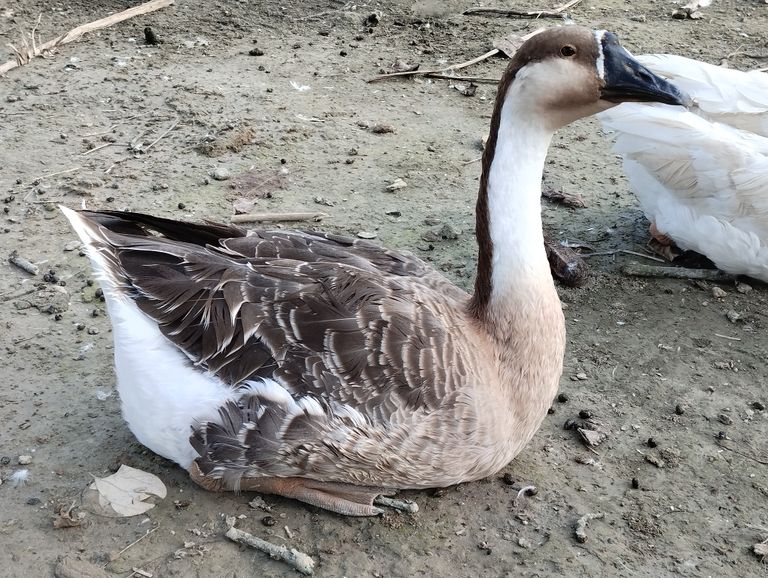
Benefits of Eating Goose Meat.
Goose meat, often referred to as a delicacy in many parts of the world, has been a part of human diets for centuries. In various cultures, it is considered a luxurious dish, primarily consumed during festive occasions or special celebrations. Unlike chicken or duck, goose meat has its own unique flavor profile and a host of nutritional benefits. In this blog, we will explore the nutritional value of goose meat, its health benefits, and why it can be a good addition to your diet.
1. Rich Source of Protein
Protein is essential for building and repairing tissues, producing enzymes, hormones, and other body chemicals. Goose meat is a fantastic source of high-quality protein, providing all the essential amino acids required by the human body. For individuals seeking to increase their protein intake without compromising on flavor, goose meat is a viable option. It offers a similar protein content to chicken and turkey but with a richer flavor that enhances the dining experience.
A 100-gram serving of cooked goose meat contains approximately 29 grams of protein, making it an excellent choice for athletes, bodybuilders, and those who are recovering from illness or surgery, as it aids in tissue repair and muscle growth.
2. Healthy Fats and Omega-3 Fatty Acids
One of the standout features of goose meat is its fat content. While some may view this as a negative, it is essential to understand the type of fat that goose meat provides. Goose meat is rich in unsaturated fats, particularly omega-3 and omega-6 fatty acids. These healthy fats are crucial for heart health, brain function, and reducing inflammation throughout the body.
Omega-3 fatty acids are well-known for their cardiovascular benefits. They help reduce the risk of heart disease by lowering triglyceride levels, reducing blood pressure, and preventing the buildup of plaques in the arteries. Additionally, omega-3s play a significant role in maintaining brain health, improving cognitive function, and reducing the risk of mental health issues such as depression and anxiety.
3. High in Iron
Iron is a vital mineral that helps transport oxygen throughout the body and is crucial for the production of hemoglobin, a protein in red blood cells. A deficiency in iron can lead to anemia, causing symptoms such as fatigue, weakness, and poor concentration.
Goose meat is a rich source of heme iron, which is more easily absorbed by the body compared to non-heme iron found in plant-based foods. A 100-gram serving of goose meat can provide up to 30% of the daily recommended intake of iron for adults. This makes goose meat an excellent dietary choice for individuals at risk of iron deficiency, such as women of childbearing age, athletes, and those with certain medical conditions.
4. Vitamins and Minerals
In addition to iron, goose meat is packed with other essential vitamins and minerals that contribute to overall health. These include:
Vitamin B12: Goose meat is a rich source of vitamin B12, which is essential for maintaining healthy nerve cells, producing DNA, and preventing megaloblastic anemia. A deficiency in vitamin B12 can lead to neurological issues and cognitive decline.
Zinc: Zinc is necessary for a healthy immune system, wound healing, and proper cell division. It also plays a role in maintaining skin health and synthesizing proteins. Goose meat provides a substantial amount of zinc, supporting the body's ability to fight off infections and recover from injuries.
Phosphorus: Phosphorus is essential for strong bones and teeth. It works alongside calcium to ensure bone density and strength. Goose meat contributes to the daily intake of phosphorus, which is vital for energy production and maintaining a healthy skeletal system.
5. Supports Immune Health
The combination of vitamins, minerals, and healthy fats found in goose meat helps boost the immune system. Zinc, in particular, is critical for maintaining immune function. Regular consumption of goose meat can aid in the prevention of infections, enhance the body’s ability to heal, and provide an overall boost to the immune response. This makes goose meat particularly beneficial during cold and flu season or periods of heightened stress.
6. Supports Skin Health
Due to its high zinc content and healthy fat profile, goose meat can contribute to better skin health. Zinc plays a crucial role in cell growth and regeneration, which is essential for wound healing and maintaining the elasticity and smoothness of the skin. Moreover, the omega-3 fatty acids in goose meat help maintain the skin's moisture, reducing the likelihood of dryness, flakiness, and irritation. Consuming foods rich in omega-3 fatty acids can also reduce the symptoms of skin conditions like eczema and psoriasis.
7. Sustainability and Ethical Considerations
For those concerned with the ethical and environmental impact of their food choices, goose meat can be a more sustainable option compared to other meats like beef or pork. Geese are often raised on free-range farms, where they are allowed to graze naturally, making them a more ethical choice in terms of animal welfare. Additionally, geese can thrive in environments where other livestock may not, reducing the overall environmental footprint.
While goose farming is not as widespread as chicken or turkey farming, its more limited production often means that geese are raised under better conditions, with less reliance on intensive farming practices that can harm the environment.
8. Culinary Versatility
In addition to its health benefits, goose meat is a versatile ingredient in the kitchen. Its rich, slightly gamey flavor can enhance a variety of dishes, from traditional roasts to stews, stir-fries, and even salads. Goose meat can be prepared in numerous ways, including roasting, braising, grilling, and slow-cooking. The fat rendered from goose meat is also a prized ingredient in many cuisines and can be used to enhance the flavor of vegetables, potatoes, and other side dishes.
Goose meat pairs well with robust flavors such as garlic, rosemary, thyme, and red wine, making it an excellent choice for hearty, flavorful meals. Its versatility ensures that it can be incorporated into a wide range of cuisines, from European to Asian dishes.
9. Weight Management
Despite being higher in fat than chicken or turkey, goose meat can still be part of a balanced diet for those looking to manage their weight. The fats found in goose meat are primarily healthy unsaturated fats, which provide a sense of satiety and can help prevent overeating. Furthermore, the protein content in goose meat contributes to feelings of fullness, reducing the likelihood of snacking or overindulgence in other, less nutritious foods.
By incorporating goose meat into a balanced diet that includes plenty of vegetables, whole grains, and healthy fats, individuals can enjoy a satisfying meal that supports weight management and overall health.
Conclusion
Goose meat is a highly nutritious and flavorful food that offers a wealth of health benefits. From its rich protein content to its abundance of essential vitamins and minerals, including iron, zinc, and vitamin B12, goose meat can be a valuable addition to any diet. Its healthy fats, including omega-3 fatty acids, support heart health, brain function, and skin health, making it a well-rounded source of nutrition.
Whether you're seeking a new protein source for muscle growth, looking to improve your skin health, or simply want to explore new culinary possibilities, goose meat offers a unique and beneficial option. With its sustainability and ethical farming practices, goose meat is also a conscientious choice for those looking to make more responsible food decisions. So, next time you’re planning a special meal, consider incorporating goose meat into your menu and enjoy both its delicious flavor and numerous health benefits.
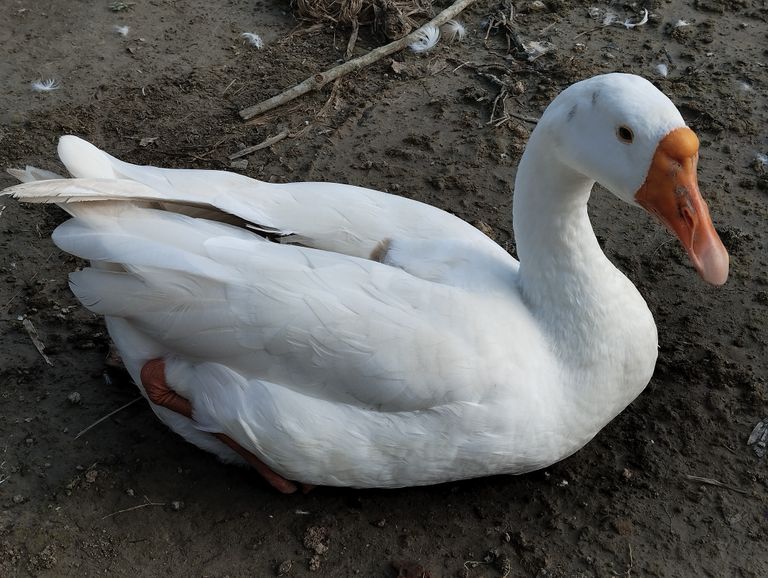
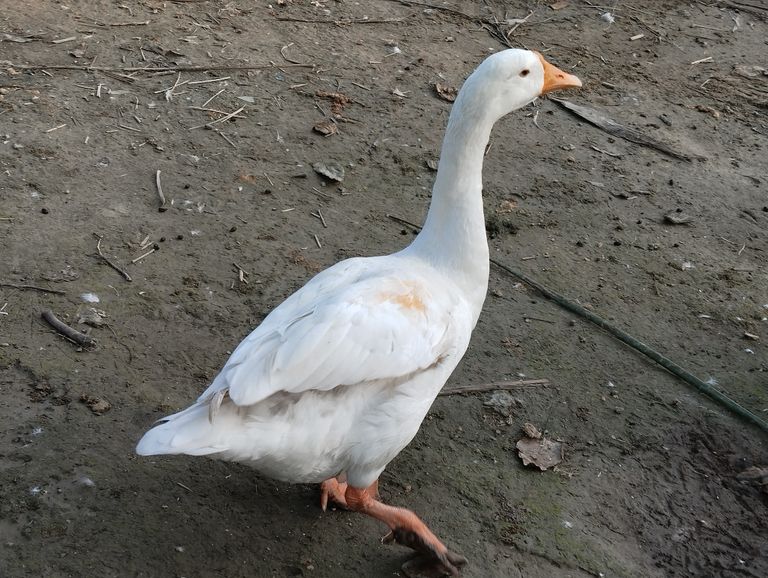
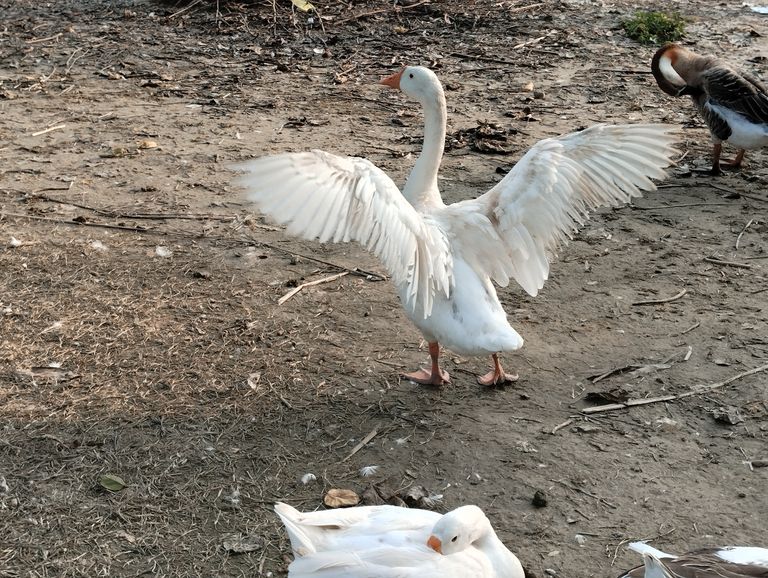
Raising Geese: A Comprehensive Guide to Keeping Domestic Geese
Raising geese, especially domesticated geese, has been a cherished tradition across many cultures for centuries. Whether you are interested in geese for their meat, eggs, feathers, or as natural lawnmowers and pets, keeping geese is a rewarding venture. In this blog, we will explore the key aspects of raising geese, from selecting the right breed to maintaining their health and well-being.
1. Why Raise Geese?
Before diving into the specifics of raising geese, it’s important to understand the benefits they provide. Geese are more than just large waterfowl; they offer multiple advantages to farmers, hobbyists, and even those with small backyard farms.
- Low Maintenance: Geese are relatively low-maintenance birds compared to other poultry. They are hardy, resilient to various weather conditions, and can fend off many predators due to their size.
- Natural Lawn Mowers: Geese are primarily herbivores and graze on grass. Many farmers use them to manage weeds or maintain large grassy areas.
- Eggs, Meat, and Feathers: Geese lay large, nutrient-rich eggs, and their meat is considered a delicacy in many cuisines. Their feathers are also valuable, especially for making pillows, quilts, and other products.
- Guard Animals: Geese are naturally territorial and make excellent watchdogs, as they are quick to sound an alarm when intruders (both human and animal) approach.
2. Selecting the Right Breed of Geese
The first step in raising geese is selecting a breed that suits your needs and environment. There are several domesticated breeds of geese, each with its characteristics. Here are some popular breeds:
- Embden: Known for their large size and excellent meat quality. They are primarily white and have a calm disposition.
- Toulouse: A French breed, popular for its meat and liver (used in foie gras). They are large, gray birds with a placid nature.
- Chinese Geese: Smaller and more active than other breeds, they are excellent foragers and are often used for weed control.
- African Geese: A large breed with a distinctive knob on their heads. They are good for meat production and are also used as guard geese due to their loud, alert nature.
When choosing a breed, consider factors like climate, purpose (meat, eggs, weed control), and temperament. Some geese breeds thrive in colder climates, while others prefer more temperate zones.
3. Housing and Space Requirements
Geese are outdoor animals and require ample space to thrive. Unlike chickens, they are not comfortable being confined to small coops for extended periods. Here are the key considerations for housing geese:
- Shelter: Geese need a simple shelter to protect them from the elements. This could be a basic shed or a three-sided shelter. It doesn’t have to be fancy but should provide protection from wind, rain, and excessive cold.
- Fencing: While geese are generally good at deterring smaller predators, a fence is still necessary to keep them safe from larger animals like foxes or dogs. The fence should be at least 4-5 feet tall, and you may want to consider electric fencing for extra protection.
- Pond or Water Source: Geese love water and will thrive if they have access to a pond, stream, or even a kiddie pool. While they don’t need water to swim in every day, they do need water to clean themselves and maintain healthy feathers.
- Grazing Area: Geese are grazers, and they require a large grassy area to forage. Ideally, you should have about 1/4 acre of grass per pair of geese. If grass is limited, you can supplement their diet with fresh greens.
4. Feeding Geese
Geese are relatively easy to feed, as they primarily graze on grass and other green plants. However, to ensure they are getting all the necessary nutrients, especially during the winter months when grass is scarce, additional food may be required.
- Grass and Greens: Geese can obtain most of their nutritional needs from grazing, especially in the warmer months. They will happily eat clover, dandelions, and other common weeds.
- Grain Supplement: While geese don’t need a lot of grain, it’s a good idea to provide some cracked corn, oats, or wheat during the colder months or when grass is scarce.
- Pelleted Feed: If grazing isn’t sufficient, you can supplement their diet with commercial waterfowl feed, which is specially formulated to meet their nutritional needs.
- Fresh Water: Geese drink a lot of water, so ensure they always have access to clean, fresh water. If you’re raising goslings, they’ll need water that is shallow enough to prevent drowning.
5. Breeding and Goslings
If you plan on breeding geese, understanding their reproductive cycle is essential. Geese typically start breeding in early spring and can lay up to 40 eggs per season, depending on the breed.
- Nesting: Geese will create nests in a sheltered area. It’s a good idea to provide nesting boxes or secluded areas with plenty of straw for them to build their nests.
- Incubation: Geese have a strong instinct to incubate their eggs, and the incubation period is typically 28-30 days. If you’re using an incubator, ensure the temperature and humidity levels are optimal for hatching.
- Caring for Goslings: Goslings are relatively easy to care for and grow quickly. They need a warm, dry place for the first few weeks and should be fed a special waterfowl starter feed.
6. Health and Care
Geese are generally hardy animals, but they still require regular care to ensure they stay healthy. Here are some health considerations:
- Parasites: Geese, like all poultry, can be prone to parasites, both internal and external. Regularly check your geese for signs of lice, mites, or worms. You can treat them with appropriate medications if necessary.
- Feather Maintenance: Geese need access to water to keep their feathers in good condition. Without regular bathing, their feathers can become brittle and lose their insulating properties.
- Foot Care: Geese are heavy birds, and foot problems can occur, especially if they are kept in muddy or rough terrain. Provide clean, dry areas to rest, and ensure they aren’t walking on hard, uneven surfaces for extended periods.
7. Conclusion
Raising geese can be a fulfilling and low-maintenance way to enhance your farm or homestead. They offer multiple benefits, from weed control and egg production to their role as watchdogs. With the right care, shelter, and feeding, geese will thrive in a variety of environments, offering you a rewarding and sustainable addition to your farm.
Whether you’re a beginner or an experienced farmer, geese are an excellent choice for anyone looking to diversify their poultry flock. Their hardy nature, combined with their low-maintenance needs, makes them an attractive option for those who want to enjoy the many benefits of raising geese.
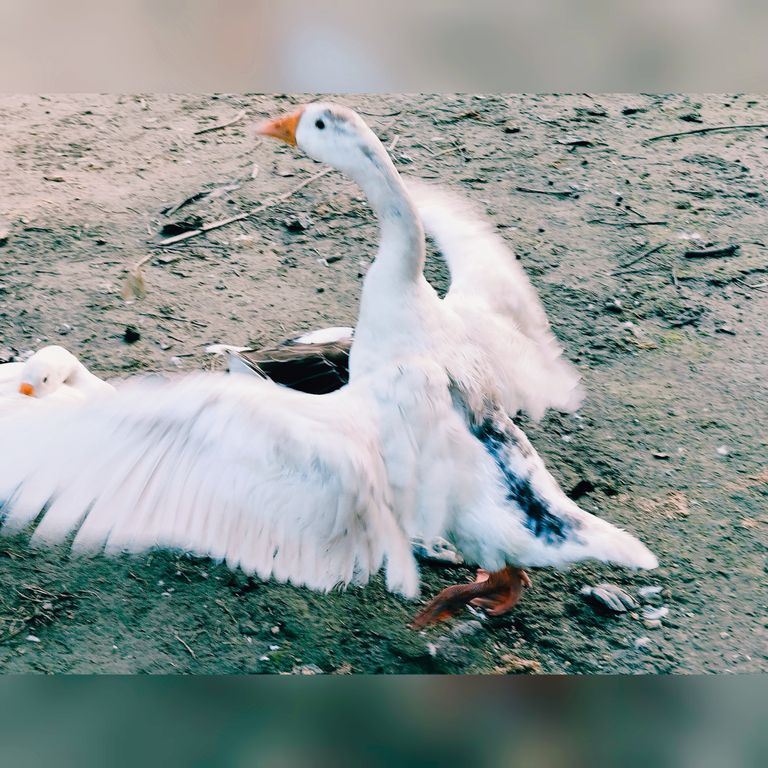
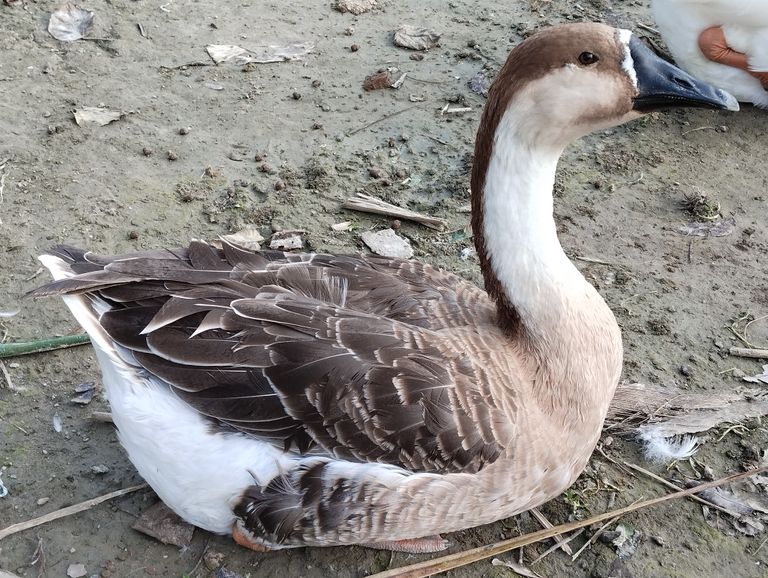
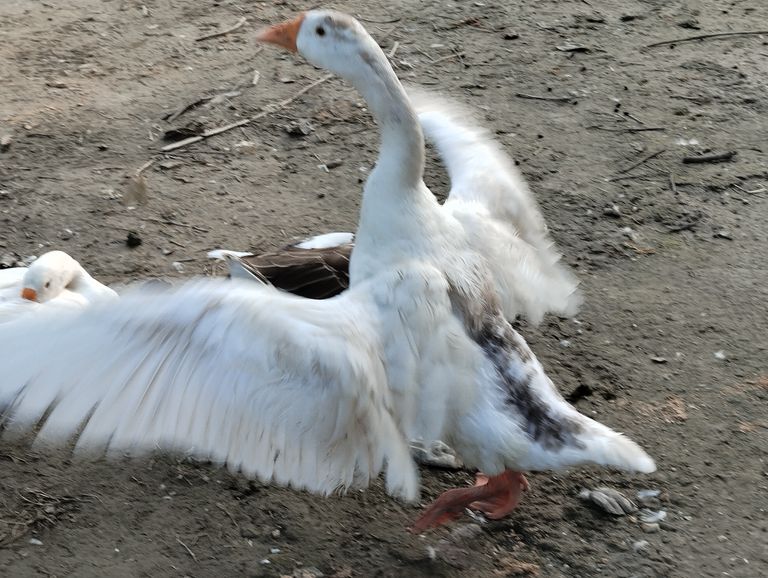
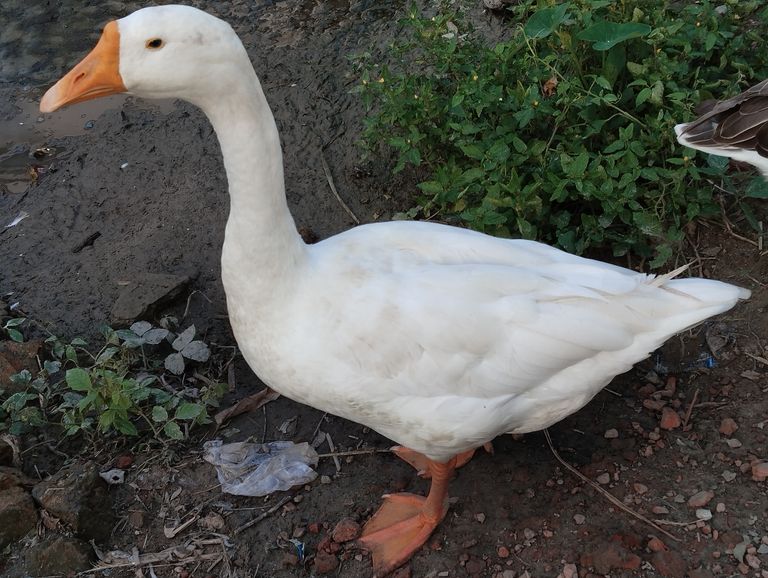
Diseases and Ailments in Swans (Rajhans)
Swans, also known as "Rajhans" in Bengali, are majestic waterfowl known for their grace and beauty. These large birds are primarily found in freshwater habitats like lakes, rivers, and wetlands. They are known for their distinctive long necks and elegant gliding on water. While swans are often symbols of purity and grace, they are not immune to diseases and ailments. Like all living organisms, swans are susceptible to various health issues that can impact their well-being and survival.
In this blog, we will explore the common diseases and health issues that swans may face, their symptoms, causes, and preventive measures.
1. Botulism
Botulism is a serious paralytic illness caused by a neurotoxin produced by the bacterium Clostridium botulinum. It is one of the most dangerous diseases affecting swans, particularly during the warm summer months when environmental conditions favor the growth of the bacteria.
Causes:
- Ingestion of toxins produced by the bacteria in contaminated water or food.
- Swans feeding on rotting vegetation or decaying animal matter in stagnant water.
Symptoms:
- Weakness and lethargy.
- Inability to hold up their heads (a characteristic symptom known as "limberneck").
- Paralysis of the wings and legs, leading to an inability to fly or walk.
Prevention:
- Keeping water bodies clean and avoiding stagnant, polluted environments.
- Removing dead animals or decaying vegetation from water sources where swans are present.
2. Avian Influenza (Bird Flu)
Avian Influenza, commonly known as Bird Flu, is caused by various strains of the Influenza Type A virus. This disease can affect a wide variety of bird species, including swans. It is highly contagious and can result in severe illness and death in infected birds.
Causes:
- Direct contact with infected birds or contaminated water.
- Transmission through secretions such as saliva, nasal discharge, or feces of infected birds.
Symptoms:
- Sudden death in severe cases.
- Respiratory distress, coughing, sneezing.
- Diarrhea and decreased egg production in breeding swans.
- Swollen head, neck, and eyelids.
Prevention:
- Regular monitoring for symptoms of illness.
- Immediate isolation of any sick birds to prevent the spread of the virus.
- Vaccination in areas where avian flu is prevalent.
- Avoiding contact between swans and wild birds, which may carry the virus.
3. Lead Poisoning
Swans are particularly vulnerable to lead poisoning, which occurs when they ingest lead-based materials, often in the form of lead fishing weights or lead shot left behind by anglers and hunters. Lead poisoning can be fatal if not treated.
Causes:
- Ingestion of lead-based fishing tackle or shot that has been discarded in water bodies.
- Feeding in areas where lead particles are present.
Symptoms:
- Weakness and difficulty flying.
- Loss of weight and poor muscle coordination.
- Green feces due to the digestive system being affected.
- Seizures, tremors, or even death in severe cases.
Prevention:
- Promoting the use of non-toxic fishing weights and shot in environments where swans are present.
- Regular clean-up of lakes, ponds, and rivers to remove lead-based materials.
- Educating anglers and hunters about the dangers of lead poisoning to waterfowl.
4. Angel Wing
Angel Wing, also known as "slipped wing," is a condition in which the swan’s wings twist outward, rendering them unable to fly. This deformity is typically seen in young swans and is believed to be caused by poor nutrition.
Causes:
- Overfeeding of protein-rich or high-calorie human food, such as bread.
- Rapid growth due to an unbalanced diet, particularly in captive swans.
Symptoms:
- Outward twisting of one or both wings.
- Inability to fly or difficulty in doing so.
- Visible deformity in the affected wing(s).
Prevention:
- Feeding swans a natural diet that mimics what they would consume in the wild, such as aquatic plants and grasses.
- Avoiding feeding them bread or other human food, which can disrupt their nutritional balance.
- Ensuring young swans have a proper diet that supports steady growth.
5. Parasitic Infections
Swans are susceptible to a variety of parasitic infections, including those caused by internal parasites (endoparasites) and external parasites (ectoparasites). These parasites can cause discomfort and lead to more serious health issues if left untreated.
Causes:
- Ingestion of parasite eggs or larvae from contaminated food or water.
- Contact with infected birds or surfaces, especially in crowded environments.
- Poor hygiene in captivity.
Symptoms:
- Weight loss and reduced appetite.
- Lethargy and weakness.
- Diarrhea or digestive issues.
- Excessive preening or scratching due to irritation from external parasites.
Prevention:
- Regular deworming and health checks in captive swans.
- Keeping living areas clean and well-maintained.
- Avoiding overcrowded environments that can increase the risk of parasite transmission.
6. Aspergillosis
Aspergillosis is a fungal infection caused by Aspergillus species, commonly found in decaying vegetation, grain, and soil. This disease affects the respiratory system of swans and can lead to severe breathing difficulties.
Causes:
- Inhalation of fungal spores from contaminated environments.
- Living in damp or moldy conditions, especially in captivity.
Symptoms:
- Labored breathing and wheezing.
- Coughing or sneezing.
- Loss of appetite and weight loss.
- Lethargy and general weakness.
Prevention:
- Providing clean, dry living conditions for captive swans.
- Avoiding exposure to moldy feed or bedding materials.
- Prompt removal of decaying vegetation or organic matter from their environment.
7. Swimmer's Itch (Cercarial Dermatitis)
Swimmer’s itch, or cercarial dermatitis, is a skin rash caused by the larvae of certain parasites found in freshwater environments. Swans that spend time in infested water can develop this condition.
Causes:
- Contact with water containing infected snail hosts, which release parasite larvae.
- The larvae penetrate the skin, causing irritation.
Symptoms:
- Red, itchy bumps or rashes on the skin.
- Irritation and discomfort, especially after swimming or preening.
Prevention:
- Avoiding stagnant or contaminated water sources.
- Encouraging proper water management in areas frequented by swans.
- Keeping swans in clean, parasite-free environments.
Conclusion
Swans, like any other animal, are susceptible to a range of diseases and health issues. Proper care, nutrition, and habitat management are essential in preventing many of these ailments. By understanding the causes and symptoms of common swan diseases, bird enthusiasts, wildlife caretakers, and conservationists can take proactive measures to ensure the health and longevity of these graceful creatures. Preventative measures, timely diagnosis, and appropriate treatment are key in safeguarding the well-being of swans in both the wild and captivity.
In addition to professional veterinary care, it’s important to educate the public about responsible interaction with wildlife, especially when feeding or observing swans in their natural habitats.